
Aleksandar Živojinović,, known professionally as Alex Lifeson, is a Canadian musician, best known as the guitarist and backing vocalist for the rock band Rush. In 1968, Lifeson co-founded a band that would later become Rush, with drummer John Rutsey and bassist and lead vocalist Jeff Jones. Jones was replaced by Geddy Lee a month later, and Rutsey was replaced by Neil Peart in 1974. Before the band was disbanded in 2018, Lifeson was the only continuous member who stayed in Rush since its inception, and along with bass guitarist/vocalist Geddy Lee, the only member to appear on all of the band's albums.

Geddy Lee is a Canadian musician, best known as the lead vocalist, bassist, and keyboardist for the rock group Rush. Lee joined the band in September 1968, at the request of his childhood friend Alex Lifeson, replacing original bassist and frontman Jeff Jones. Lee's solo effort, My Favourite Headache, was released in 2000.

Neil Ellwood Peart OC was a Canadian-American musician, best known as the drummer and primary lyricist of the rock band Rush. Peart earned numerous awards for his musical performances, including an induction into the Modern Drummer Readers Poll Hall of Fame in 1983 at the age of thirty, making him the youngest person ever so honoured. Known to fans by the nickname 'The Professor', his drumming was renowned for its technical proficiency and his live performances for their exacting nature and stamina.

Rush was a Canadian rock band that primarily comprised Geddy Lee, Alex Lifeson (guitar), and Neil Peart. The band formed in Toronto in 1968 with Lifeson, drummer John Rutsey, and bass guitarist/vocalist Jeff Jones, whom Lee immediately replaced. After Lee joined, the band went through several line-ups before arriving at its classic power trio line-up with the addition of Peart in July 1974, who replaced Rutsey four months after the release of their self-titled debut album; this line-up remained intact for the remainder of the band's career.
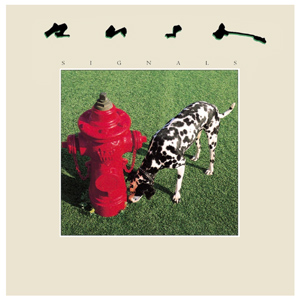
Signals is the ninth studio album by Canadian rock band Rush, released on September 9, 1982 by Anthem Records. After the release of their previous album, Moving Pictures, the band started to prepare material for a follow-up during soundchecks on their 1981 concert tour and during the mixing of their subsequent live album Exit...Stage Left. Signals demonstrates the group's continuing use of synthesizers, sequencers, and other electronic instrumentation. It is the last album produced by their longtime associate Terry Brown, who had worked with them since 1974.
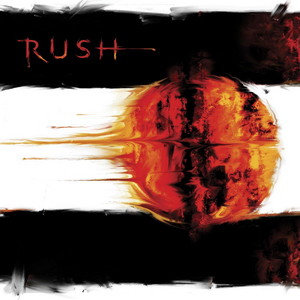
Vapor Trails is the seventeenth studio album by Canadian rock band Rush. It was released on May 14, 2002, on Anthem Records, and was their first studio release since Test for Echo (1996), the longest gap between two Rush albums. After the Test For Echo tour finished in July 1997, drummer and lyricist Neil Peart suffered the loss of his daughter and then his wife in separate tragedies. As a result, the group entered an extended hiatus during which it was not certain they would continue. They eventually reunited in January 2001 to rehearse material for a new album, recording for which lasted until December. For the first and only time since Caress of Steel (1975), the group did not use any keyboards or synthesizers in their music, incorporating many layers of guitar, bass and drums instead.

Roll the Bones is the fourteenth studio album by Canadian rock band Rush, released September 3, 1991, on Anthem Records. The band began working on Roll the Bones after a brief creative hiatus following the tour promoting their previous release, Presto.

Rush in Rio is a three-disc live album by Canadian band Rush, released on October 21, 2003. The album is also available as a two DVD set. With the exception of the last two tracks on the third disc, the album was recorded at Maracanã Stadium in Rio de Janeiro on the final night of the Vapor Trails Tour. The other two tracks were taken from previous shows on the same tour. "Between Sun & Moon" was recorded at the Cricket Wireless Pavilion, Phoenix, Arizona, on September 27, 2002, and "Vital Signs" was recorded at the Colisée Pepsi, Quebec City, Quebec, on October 19, 2002.
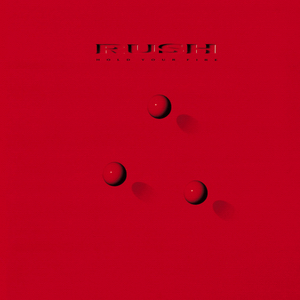
Hold Your Fire is the twelfth studio album by Canadian rock band Rush, released on September 8, 1987. It was recorded at The Manor Studio in Oxfordshire, Ridge Farm Studio in Surrey, Air Studios in Montserrat and McClear Place in Toronto. Hold Your Fire was the last Rush studio album released outside Canada by PolyGram/Mercury. 'Til Tuesday bassist and vocalist Aimee Mann contributed vocals to "Time Stand Still" and appeared in the Zbigniew Rybczyński-directed video.

Counterparts is the fifteenth studio album by Canadian rock band Rush, released October 19, 1993, on Anthem Records. After the band finished touring its previous album Roll the Bones (1991) in mid-1992, the members took a break before starting work on a follow-up.

Test for Echo is the sixteenth studio album by the Canadian rock band Rush, released on 10 September 1996 on Anthem Records. It was the final Rush album co-produced by Peter Collins. The band supported the album with a world tour in 1996 and 1997, after which they went on a four-year hiatus following the deaths of drummer Neil Peart's daughter and wife, and would not record again until 2002.
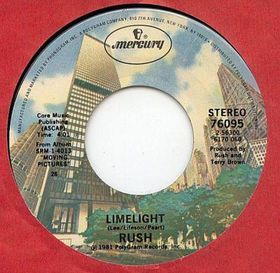
"Limelight" is a song by the Canadian progressive rock band Rush. It first appeared on the 1981 album Moving Pictures. The song's lyrics were written by Neil Peart with music written by Geddy Lee and Alex Lifeson. "Limelight" expresses Peart's discomfort with Rush's success and the resulting attention from the public. The song paraphrases the opening lines of the "All the world's a stage" speech from William Shakespeare's play As You Like It. The band had previously used the phrase for its 1976 live album. The lyrics also refer to "the camera eye", the title of the song that follows on the Moving Pictures album.

Snakes & Arrows is the 18th studio album by Canadian rock band Rush, released on May 1, 2007, by Anthem Records. After their R30: 30th Anniversary Tour ended in October 2004 the band took a one-year break, during which they agreed to start work on a follow-up in January 2006. The album was recorded in five weeks with co-producer Nick Raskulinecz, a fan of the group who was praised by each member for his approach and technique. It contains three instrumental tracks, the most on any Rush album.

"Far Cry" is a song by the Canadian progressive rock band Rush. It was released as the first single from their 2007 album Snakes & Arrows. It was released to radio on March 12, 2007, then saw a digital release four days later. The song peaked at number 22 on the Billboard Mainstream Rock Tracks chart.
Malignant Narcissism is an instrumental track from Rush's 2007 album Snakes & Arrows. "Malignant Narcissism" was nominated for a 2008 Grammy under the category of Best Rock Instrumental Performance, Rush's fifth nomination in said category. However, the song lost to Bruce Springsteen's "Once Upon a Time in the West" making it their fifth defeat in that category.
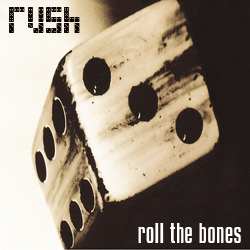
"Roll the Bones" is a song by the Canadian rock band Rush. It was released as the second single from their 1991 album of the same name.

"Dreamline" is a song by the Canadian rock band Rush. It was released as a single and on their 1991 album Roll the Bones. The song peaked at number one on the U.S. Mainstream Rock Tracks chart, and was a staple for live performances by Rush, having been performed on every tour from the inaugural Roll the Bones Tour until the 2010 and 2011 Time Machine Tour, when it was dropped. It was performed during the subsequent Clockwork Angels Tour, where it was accompanied by the Clockwork Angels string ensemble and a video with a dedication to Neil Armstrong. It was dropped again on the 2015 R40 Tour. In live performances, the bridge was extended to incorporate a solo by Alex Lifeson.

Clockwork Angels is the nineteenth and final studio album by Canadian rock band Rush, released on June 12, 2012, on Roadrunner Records. During the band's year-and-a-half break following its Snakes & Arrows Tour, the group decided to write a new studio album. The album was recorded in April 2010 at Blackbird Studio in Nashville, Tennessee, and from October to December 2011 at Revolution Recording in Toronto, Ontario, Canada.

"Caravan" is the first single from Canadian rock band Rush's 19th studio album, Clockwork Angels. It was released to radio stations and saw digital release on June 1, 2010, on CD via mail order later that month, and as a 7" vinyl record for Record Store Day 2011, with a limited printing of 3,000 units. The B-side is an additional studio track titled "BU2B", which stands for the lyric "brought up to believe". Both songs were recorded April 13, 2010, at Blackbird Studios in Nashville with producer Nick Raskulinecz with mixing and engineering done by Richard Chycki at the Sound Kitchen in Franklin, Tennessee. The songs were mastered by Ted Jensen at Sterling Sound in New York City. Live appearances of both songs were first featured on Rush's Time Machine Tour.


















